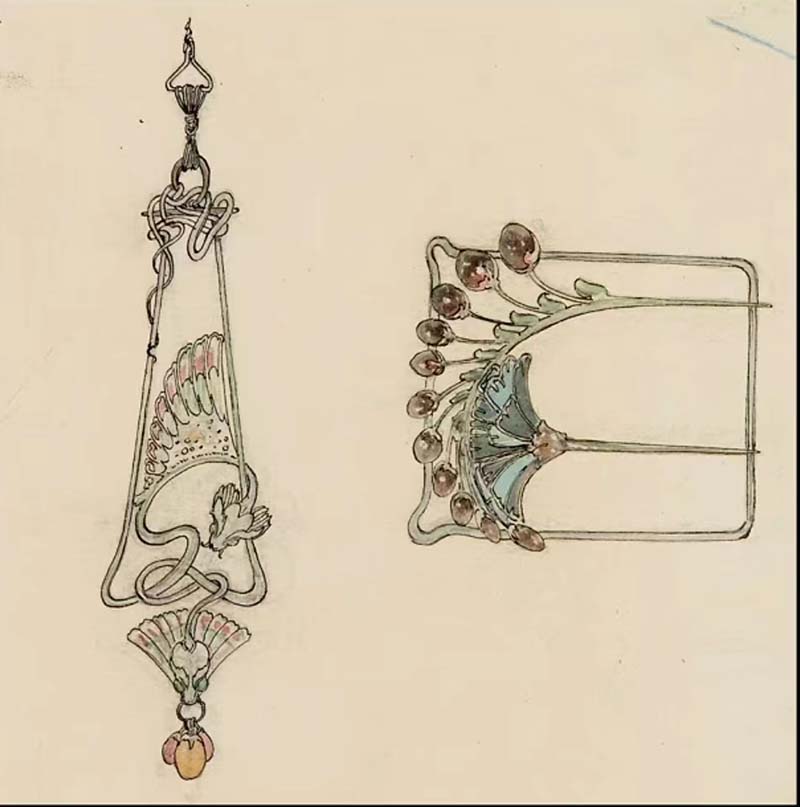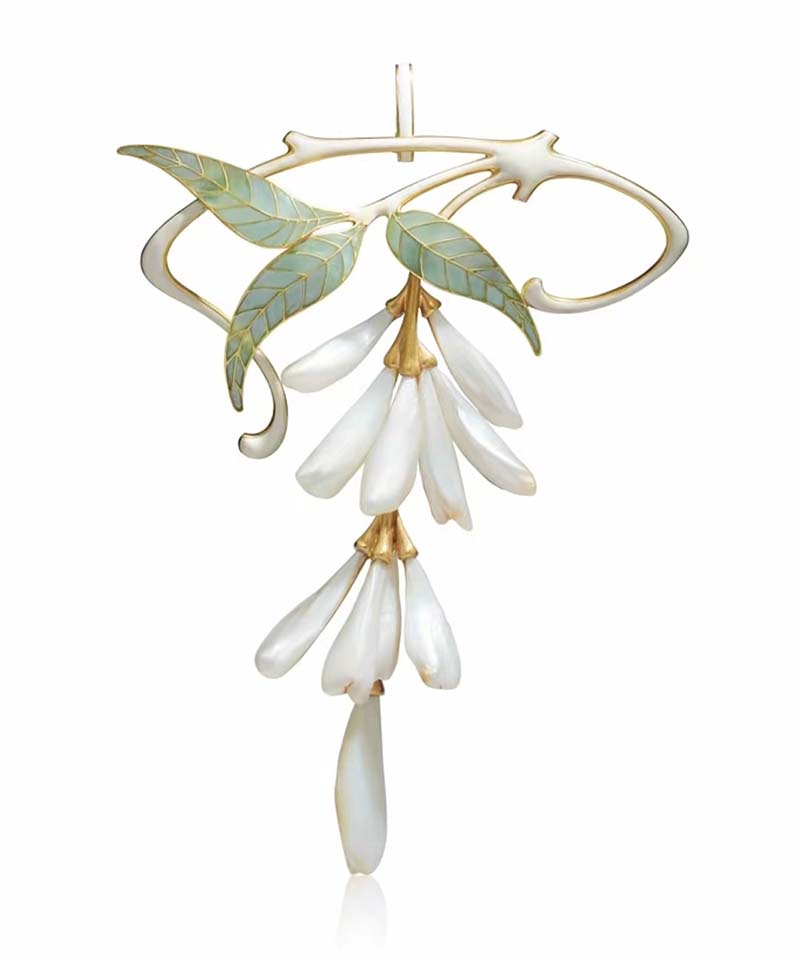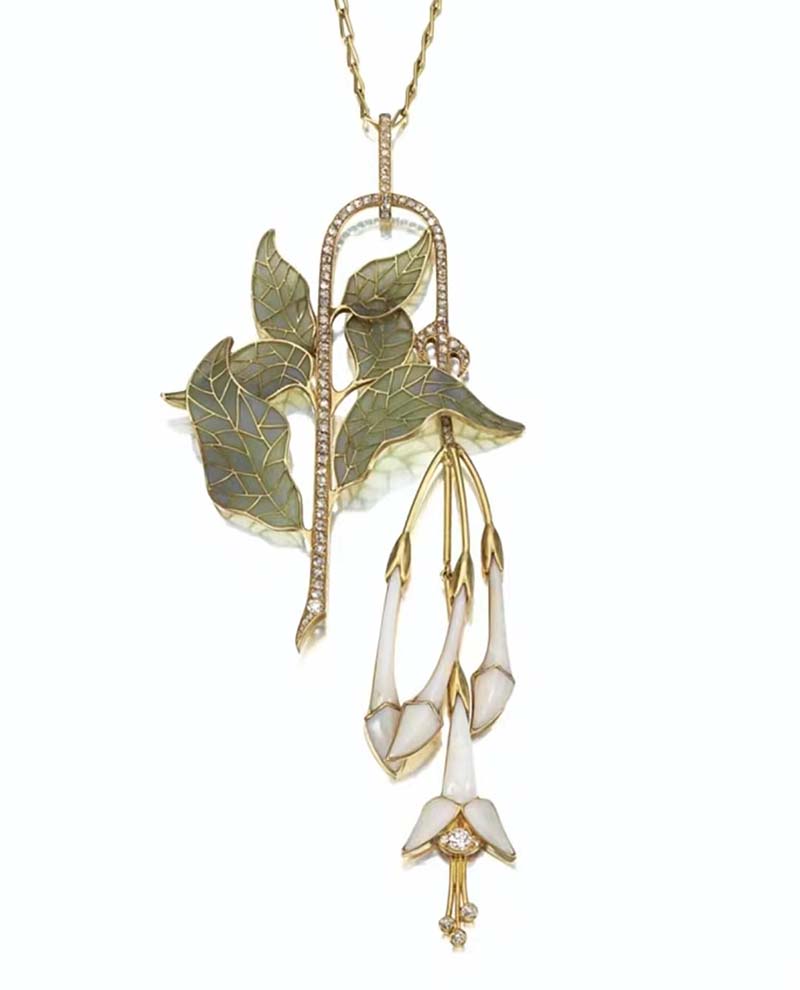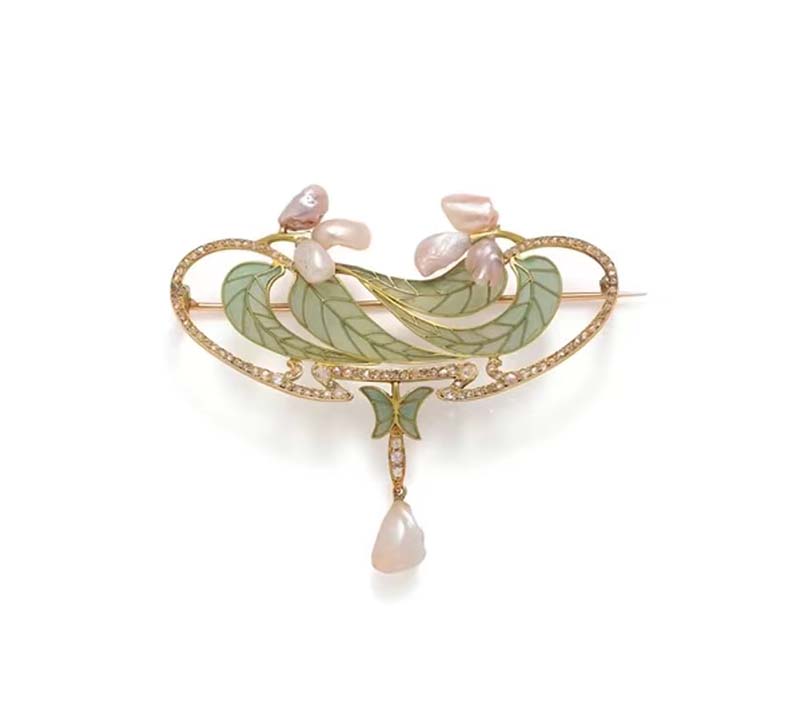Alphonse-Mucha works were often characterized by aesthetic lines and colorful, creating a visual effect rich in romance and mystery.


Georges Fouquet, the second generation of Jewelry City, was no longer interested in the traditional but old-fashioned design of jewelry and was eager to find an innovative designer to revitalize the brand.


Mucha, who had already achieved significant success in painting, was eager to innovate and surpass himself in other artistic fields.
Together, they created some of the most iconic jewelry pieces in the world.
Mucha & Georges Fouquet:

This Mucha design, now in the Metropolitan Museum of Art, features a sculpted emerald figure in a muted emerald that is the perfect color for gold.
The Hyacinth Princess Poster Pendant by Mucha has a serene and elegant portrait in the center, fired in painted enamel.
With opal as the sky, a mountain of diamonds outlined in pinched enamel embellishments gives a flowing rhythm to the waterfall.




A necklace of inverted golden bells that grow sinuously is made mainly of enameled pearls.
Mucha believes that jewelry’s beauty depends on its artistic value. His choice of materials gives the jewelry its design needs, not the stones’ value.



Henri Vever:
After Perry opened the gates of Japan with his cannon, Japanese art flooded Europe like a tidal wave.

Unlike the traditional Western painting perspective, Japanese ukiyo-e focuses more on two-dimensional representations and uses bold colors.

A harmonious natural landscape was outlined with simple and subtle brushstrokes.
A group of jewelry designers at the time attempted to break with tradition and seek a new and original design language. They drew inspiration from the paintings to create Art Nouveau jewelry pieces that have an impact to this day.
In Henri Vever’s creation, he combines an image of a young girl with the natural meandering leaves of a vine, condensing the exotic in a wealthy and peaceful way.

Inspired by the classical ballet Sylvia, the nymph represents victory.
The wings are enameled in blue gradations and the dress is made of onyx in black and white gold and set with diamonds. This demonstrates Henri Vever’s exceptional skill.
Surrounded by vines, the god Sibylline’s head is enameled in a green window, where diamonds are only an accent.
Abstract paintings of men and women’s faces emerge from the water, figures that have rarely appeared in jewelry before.


Of all enameling techniques, window enameling is undoubtedly the most advanced and difficult to achieve.
The translucent texture is particularly delicate.
A fine comb made of animal horn.




Other masterpieces:
In addition to their unique aesthetics, Art Nouveau jewelry boldly experimented with materials never been used before. These materials included horn, mother-of-pearl, and baroque pearls to complement the design.



Coral and lapis lazuli opals, which themselves have subtle tonal variations, come alive in the designer’s subtle combinations.
Insects are transformed into marvelous creatures, light and strange, fantastical and peculiar, but exceptionally beautiful.



Butterflies and dragonflies are the most common insect motifs, which are transformed by the artist’s interpretation.



Art Nouveau jewelry often used the female figure, showing women with flowing hair and soft silhouettes.
Women were sometimes flirtatious and subdued. It reflects the relationship between real life and art, and represents women’s hard-won emancipation at the time.


The magnificent peacock is a recurring motif, often using colorful enamel to express its splendor and magnificence.
Other animal motifs include swallows, seahorses and swans as well as bats, mermaids and chimeras.



Flowers and leaves are depicted in freely curving lines, swaying gently in the breeze.


Birds and insects seem ready to take flight at any moment, And they have always excelled at creating such vibrant scenes that flow and epitomize nature’s harmony.



The most remarkable Art Nouveau jewelry is full of deep emotional impact, presenting an exquisite beauty that is difficult to match with other jewelry.


The beauty of Art Nouveau jewelry is comparable to a painting by Renoir, Seurat or Gauguin, says art expert Sataroff.
They are not just ornaments or masterpieces of design, but true works of art that move the viewer. Their unique qualities are much deeper than just being pretty.










